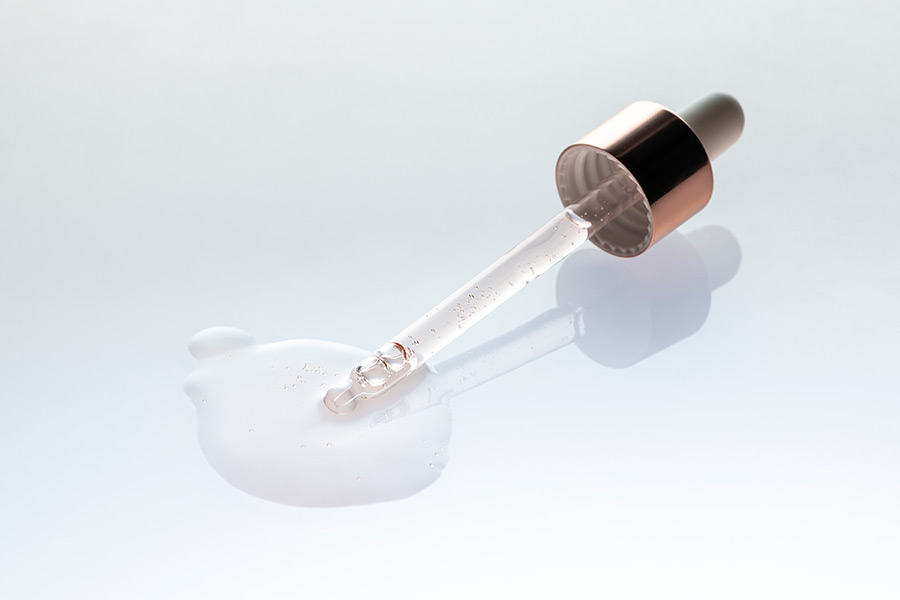Your skin tells a story: about your age, your health, and how well you take care of yourself. Your face is an essential part of that story, but there are other areas that are just as—if not more—important.
Let’s be honest: when was the last time you gave some TLC to the rest of your body? Don’t despair. It’s never too late to turn the page and begin a new chapter…
Take me straight to the product recommendations
You Won’t Believe What These 4 (Forgotten) Areas Have in Common
Your eyes, lips, hands, neck and chest are where you’ll likely start noticing the first signs of ageing and environmental free radical damage such as pollution, smog, invisible light, computer and monitor screens, etc. So, you don’t want to pass over them. Here’s why:
They’re sensitive
The skin on and around these areas is thinner—and as a result more delicate—than that on the rest of your face and body. As the rule goes: the thinner the skin, the more vulnerable the area is to external factors like sun damage and oxidative environmental damage. In addition, the tops of your hands and your neck and chest are more exposed to sunlight and free radicals than you might realise—like when you’re driving or just having a walk outside.
They’re hard-working
The skin on and around these areas gets a lot of action. For starters, your hands are always busy: writing, cooking, spring cleaning, etc. You get the picture.
They’re also exposed to frequent handwashing. Have you ever thought about how often you move your eyes—whether consciously or not—to convey something or how many times we blink per day? Like when you raise your eyebrows when you’re surprised or to show interest. Not to mention rubbing your eyes when you’re tired and pulling on the skin around them to apply makeup. All these “innocent” habits can have sinister consequences: like breaking capillaries and damaging collagen.
They have less or no oil glands
Your sebaceous or oil glands are pretty magic. They moisturise your skin and have protective benefits. Research shows that wrinkles tend to be more pronounced where oil glands are less concentrated. You guessed it: your eyes, lips, hands, and neck and chest are sadly lacking in the oil glands department. This means wrinkles in these areas tend to be more severe. This also explains why your lips and hands get so easily dry, sore, and cracked. P.S. Now’s a good time to remind you to stop licking your lips! The acid in your saliva ends up doing more harm than good.
The skin around your eyes
Common issues
- Dark circles
- Fine lines
- Puffiness
- Sagging
Best eye care
Eye cream to the rescue! The right eye cream can change the way you look and feel. On to how to choose the right product for you…
To plump your skin and stimulate collagen production.
Check the ingredient list for:
- Hyaluronic acid
- Alpha hydroxy acids (AHAs)
- Polyhydroxy acids (PHAs)
- Vitamin C
- Vitamin A
To help slow the ageing process
Check the ingredient list for:
- Peptides
- Stem cells
- Growth factors
- Anti-glycation ingredients
- Vitamin C
- Vitamin A
- Alpha hydroxy acids (AHAs)
- Polyhydroxy acids (PHAs)
To help lighten or reduce the appearance of melanin
Check the ingredient list for:
- Arbutin
- Vitamin C
To repair the skin barrier and protect against environmental free radicals
Check the ingredient list for:
- Hyaluronic acid
- Polyhydroxy acids (PHAs)
- Vitamin C
How to apply eye cream
The golden rule of eye cream application is ‘gently does it’. Pat or press the cream in with the pads of your fingers, from the inner to the outer corners of your eye area. What about your eyelid? It really depends on the cream you’re using, so read the directions but do not avoid this area. Your upper eyelid skin needs as much care as your lower eyelid skin. Lastly, let it sink in and don’t overdo it.
When to apply eye cream
Applying eye cream should be the 4th step in your morning skincare routine—after your toner and antioxidant serum, and before your spot treatment and moisturiser—and the 3rd in your evening routine—after your toner and before your vitamin A serum and moisturiser.
Your lips
Common issues
- Dryness
- Cracks
- Itchiness
Best lip care
If you want to make a statement with the hottest lip trends of the season, then it’s time you incorporated lip care into your beauty regimen.
- Use a lip balm formulated with broad-spectrum sunscreen to protect your lips from external factors
- Use a gentle scrub to get rid of dead skin cells
How and when to exfoliate
To remove dry skin, keep your lips plump and healthy, and make your lipstick look better and last longer, our expert tip is to exfoliate your lips once a week. Remember to be gentle and apply an ultra-hydrating moisturiser.
How and when to moisturise
Feel like you’re addicted to lip balm? A good rule of thumb is to apply lip balm when you wake up, after eating or drinking, and before you go to bed. Applying way more than that can actually have the opposite effect!
Your neck and chest
Common issues
- Winkles
- Dark spots
- Dryness
Best neck and chest care
Think of your neck and chest as an extension of your face…
To treat chest acne
Anti-ageing (without irritation)
Sun protection
How and when to apply cream to your décolletage
Try gently massaging cream into your neck in a few easy steps. Simply lift your chin and use upward motions with your index, middle, and ring fingers. Repeat morning and night. Whatever you do, don’t pull your skin, which can cause damage and exacerbate the appearance of wrinkles.
Your hands
Common issues
- Cracks
- Callouses
- Dryness
- Sun damage
Best hand care
Hand care should never be an afterthought. Make it part of your tool kit!
To protect against UVA and UVB rays
To instantly hydrate
To promote renewal
How often and when to apply hand cream
When it comes to how often to apply hand cream, there’s no magic number. It really depends on how often you wash your hands. Luckily, most hand creams are formulated to absorb quickly so you can continue to go about your business (sans greasy paw prints). If you’re in the mood for something a little more heavy-duty, like a heavy emollient moisturiser, then we recommend applying it for bed. That way, you’re giving it a good 8 hours to really penetrate your skin.
Here is where your skincare story begins.
Yours in skin,
Dr Alek and the SkinMiles Team




